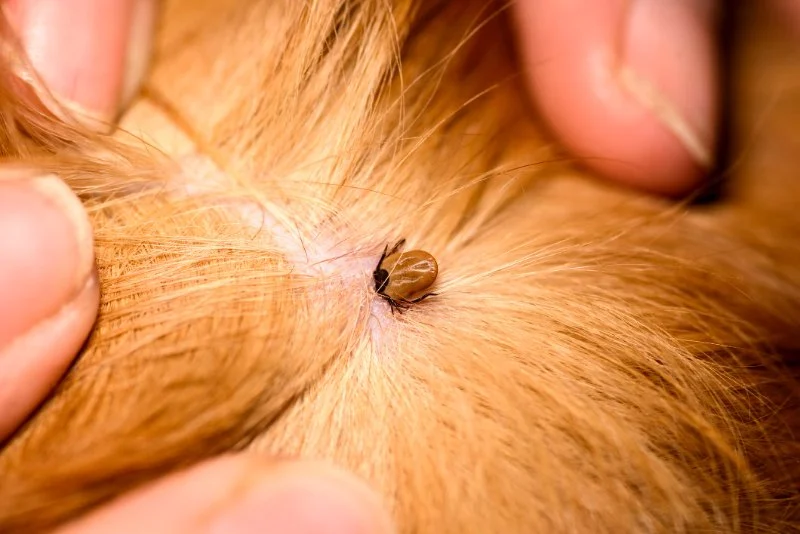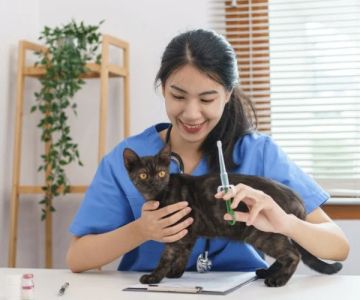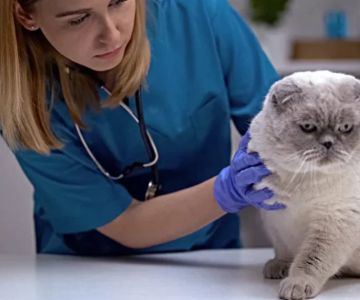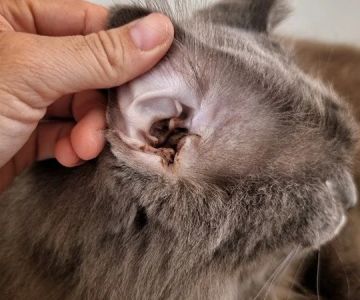
- 1. Introduction to Lice and Mites in Pets
- 2. How to Identify Lice in Pets
- 3. How to Identify Mites in Pets
- 4. Common Symptoms of Lice and Mites in Pets
- 5. Treatment Options for Lice and Mites
- 6. Preventing Future Lice and Mite Infestations
1. Introduction to Lice and Mites in Pets
Pets, especially dogs and cats, can sometimes fall victim to pesky external parasites like lice and mites. While both cause discomfort, it’s important to know the difference between them and how to identify them. In this article, we will explore the signs of lice and mite infestations, symptoms, treatments, and how to protect your furry friends from these irritating pests.
2. How to Identify Lice in Pets
Lice are small, parasitic insects that feed on the blood of animals. They are typically visible to the naked eye, making them easier to identify compared to other pests. Here’s how you can recognize lice in your pets:

Animal Hospital of Delhi Hills
2035 Anderson Ferry Rd, Cincinnati, OH 45238, USA
2.1 Physical Characteristics of Lice
Lice are usually about 1-2 mm in size and can vary in color, from white to brown. They are often found clinging to the fur, especially around the ears, neck, and base of the tail.
2.2 Symptoms of Lice Infestation
If your pet has lice, they may experience itching, scratching, and excessive grooming. You might also notice scabs or sores where the lice have bitten the skin. In severe cases, hair loss can occur.
2.3 How to Check for Lice
To check for lice, gently part your pet’s fur and look for tiny insects or their eggs (nits) attached to the hair shafts. You may need a fine-toothed comb to help inspect the coat closely.
3. How to Identify Mites in Pets
Mites are another type of tiny external parasite that can affect pets. They are less visible than lice but can still cause significant irritation. Here’s how you can spot a mite infestation:
3.1 Physical Characteristics of Mites
Mites are much smaller than lice and are not usually visible without a microscope. However, you may be able to spot scabs, redness, or areas of hair loss in the affected regions where mites have burrowed into the skin.
3.2 Symptoms of Mite Infestation
Mite infestations often cause intense itching and irritation, leading your pet to scratch excessively. You may also see your pet shaking its head or rubbing its ears or face frequently, especially in the case of ear mites.
3.3 Common Mite Types in Pets
There are different types of mites that affect pets, including Sarcoptes (scabies mites) and Demodex mites. Sarcoptes mites can cause scabies, which is highly contagious and can result in severe skin issues, while Demodex mites are typically associated with hair loss and inflammation.
4. Common Symptoms of Lice and Mites in Pets
Both lice and mites can cause a variety of symptoms in pets, making it essential to pay attention to your pet’s behavior. Common signs of lice and mite infestations include:
4.1 Itching and Scratching
Constant itching and scratching are the most common symptoms of both lice and mites. Your pet may attempt to soothe the itching by licking or biting at the affected area, leading to sores or hair loss.
4.2 Redness and Inflammation
Red, inflamed patches of skin are another common sign. You may also notice scabs and crusting as the infestation worsens.
4.3 Hair Loss
In severe cases, both lice and mites can cause hair loss, especially in areas where the pest population is concentrated. This can lead to bald patches on the skin.
5. Treatment Options for Lice and Mites
If your pet is affected by lice or mites, it’s essential to seek treatment promptly. The right treatment will depend on the type of infestation your pet has:
5.1 Topical Treatments
Many flea and tick treatments also work for lice and mites. These treatments are typically applied directly to your pet's skin, either as sprays, ointments, or spot-on treatments.
5.2 Oral Medications
In some cases, oral medications may be prescribed by your vet to treat severe infestations. These medications target internal parasites and can help eliminate the pests from within.
5.3 Regular Grooming and Bathing
Regular grooming and bathing your pet with medicated shampoos can help remove the pests from the fur and skin, especially when used in conjunction with other treatments. Be sure to use pet-safe products for this purpose.
6. Preventing Future Lice and Mite Infestations
Once your pet has been treated for lice or mites, it’s essential to take preventive measures to avoid reinfestation. Here’s how you can protect your pet from future infestations:
6.1 Regular Veterinary Checkups
Regular checkups with your vet can help spot any signs of lice or mites early on, allowing you to take action before the infestation worsens.
6.2 Keeping Your Home Clean
Maintaining a clean living environment for your pet can help prevent infestations. Regularly vacuuming and washing bedding, toys, and other pet items can eliminate pests that might be hiding in your home.
6.3 Using Preventive Treatments
Consider using preventive treatments recommended by your vet to protect your pet from lice and mites, especially if they spend time outdoors or interact with other animals that might be carrying pests.
For more tips on keeping your pet healthy and pest-free, visit Pet & Puppy, where you can find the best products for your pet’s care!








 Arizona Animal Hospital4.0 (629 reviews)
Arizona Animal Hospital4.0 (629 reviews) Pride Animal Hospital4.0 (103 reviews)
Pride Animal Hospital4.0 (103 reviews) PetVet Vaccination Clinic0.0 (0 reviews)
PetVet Vaccination Clinic0.0 (0 reviews) Gaslight Square Animal Hospital4.0 (326 reviews)
Gaslight Square Animal Hospital4.0 (326 reviews) Pecan Grove Veterinary Hospital4.0 (106 reviews)
Pecan Grove Veterinary Hospital4.0 (106 reviews) PetVet Vaccination Clinic5.0 (2 reviews)
PetVet Vaccination Clinic5.0 (2 reviews) How to Save Money on Pet Medical Costs Without Cutting Quality
How to Save Money on Pet Medical Costs Without Cutting Quality Managing Resource Guarding Behavior in Dogs: Practical Solutions for Pet Owners
Managing Resource Guarding Behavior in Dogs: Practical Solutions for Pet Owners Cat Hairballs: How to Prevent and Manage Them Effectively
Cat Hairballs: How to Prevent and Manage Them Effectively How to Handle Pet Jealousy When You Have More Than One
How to Handle Pet Jealousy When You Have More Than One How to Help a Pet Deal with Anxiety After Trauma
How to Help a Pet Deal with Anxiety After Trauma Dangerous Foods for Pets: What to Avoid Feeding and How to Keep Your Pet Safe
Dangerous Foods for Pets: What to Avoid Feeding and How to Keep Your Pet Safe